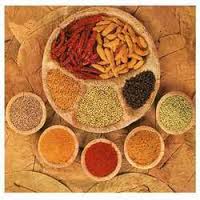New and improved manufacturing technologies, as well as a greater focus on the individual steps of the production process, are helping to enhance spice safety in the U.S. and throughout the world, according to a June 22 panel discussion at the 2014 Institute of Food Technologists (IFT) Annual Meeting & Food Expo® in New Orleans.
 Spice consumption has grown substantially in the U.S. over the past 25 years, with 86 percent of households regularly using fresh/dried herbs, spices and seasonings, according to the U.S. Food and Drug Administration (FDA). Approximately 60 percent of spices are imported, with 12 percent containing “filth”– various contaminants, including microorganisms and pathogens, such as salmonella. Consumption of spices contaminated with pathogens resulted in 14 reported illness outbreaks from 1973 to 2010 around the world.
Spice consumption has grown substantially in the U.S. over the past 25 years, with 86 percent of households regularly using fresh/dried herbs, spices and seasonings, according to the U.S. Food and Drug Administration (FDA). Approximately 60 percent of spices are imported, with 12 percent containing “filth”– various contaminants, including microorganisms and pathogens, such as salmonella. Consumption of spices contaminated with pathogens resulted in 14 reported illness outbreaks from 1973 to 2010 around the world.
“We used to think that if the produce was dry we didn’t need to worry,” said Purnendu Vasavada, PhD, professor emeritus, University of Wisconsin-River Falls. “However, even a dry spice can maintain microbial properties, including bacteria.”
The challenge is ensuring safety throughout every step of the process, which often begins on a small family farm on the other side of the world, said George C. Ziobro, PhD, a research chemist at the FDA Center for Food Safety and Applied Nutrition, the U.S. alternate delegate to the Codex Alimentarius Committee on Spices and Culinary Herbs, and one of the authors of the recent FDA draft profile, “Pathogens and Risk in Spices.”
“Novel and improved food production technologies are helping to limit spice contamination,” said Kathiravan Krishnamurthy, PhD, assistant professor of food science and nutrition at Illinois Institute of Technology.
These include pulsed light, cold plasma, and controlled condensation steam processes to eradicate pathogens during the production process. These technologies, however, can be impacted by various external factors, including many that are difficult to monitor or assess.
For example, a spice farm in India “may be as small as a backyard,” or have “15 crops on one farm,” said Ziobro.
It’s important that manufacturers know how the spices are grown, dried, stored and transported, and how the vehicles that transport the spices are cleaned. “All of these (steps in the process) can contribute to problems with sanitation in spices,” said Ziobro.
In the traditional spice sourcing supply chain, “companies are far removed from the source,” said Roger Lawrence, vice president of global quality, regulatory affairs and environmental affairs at McCormick & Company, Inc. To improve product safety, McCormick has worked to lower the number of “partners” involved in the spice production process.
“Fewer touch points reduce the risk of contamination allowing us to work directly to impact product quality and innovation,” said Lawrence.
The implementation of the Food Safety Modernization Act will provide more specific guidelines for food manufacturers, including spice manufacturers, to prevent food-borne illness.
While “one outbreak is one too many, one recall is one too many,” Lawrence noted that the FDA has recorded just three contamination/illness outbreaks for spices in 37 years. Spices represent “an extremely small percentage of outbreaks.”
